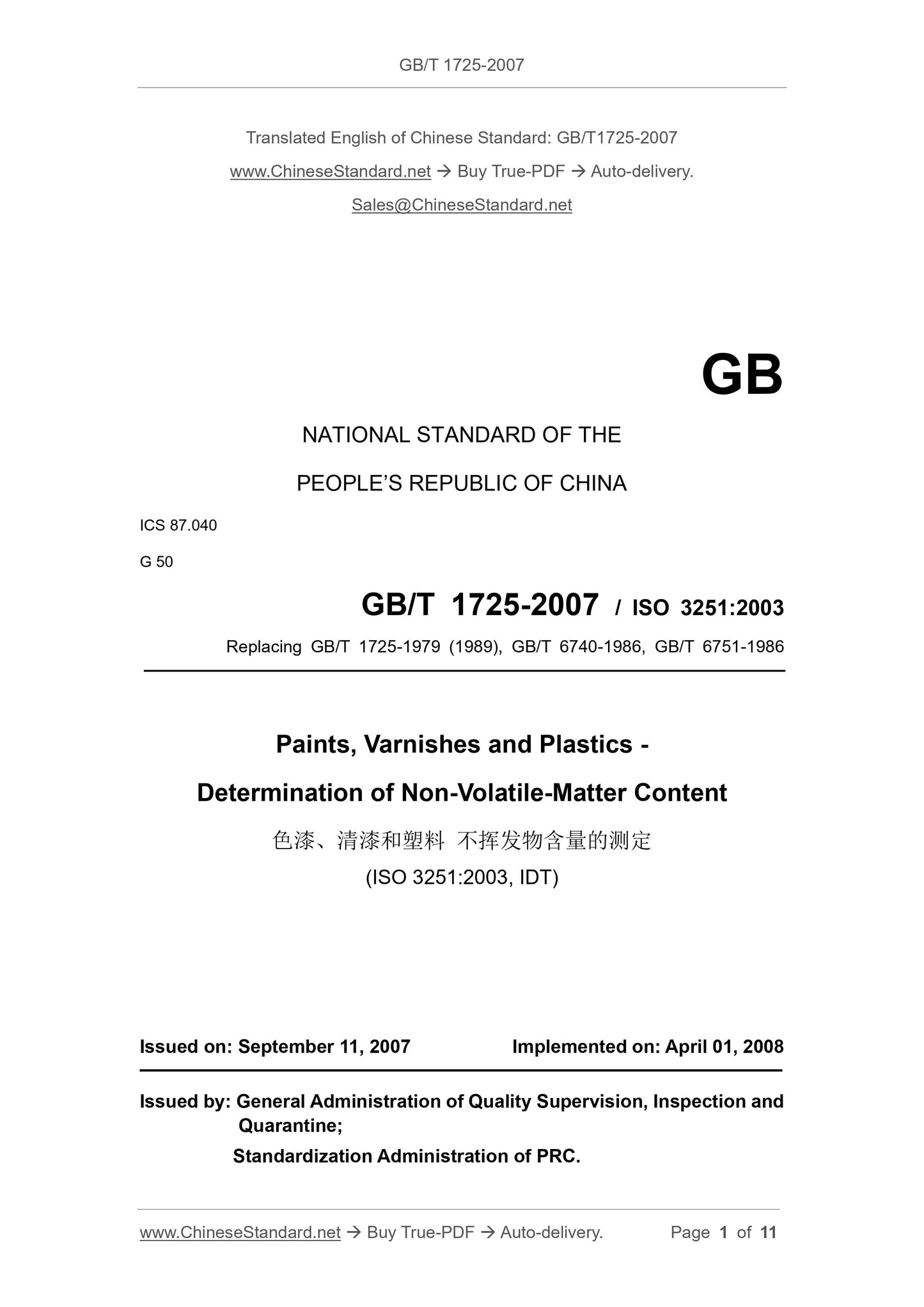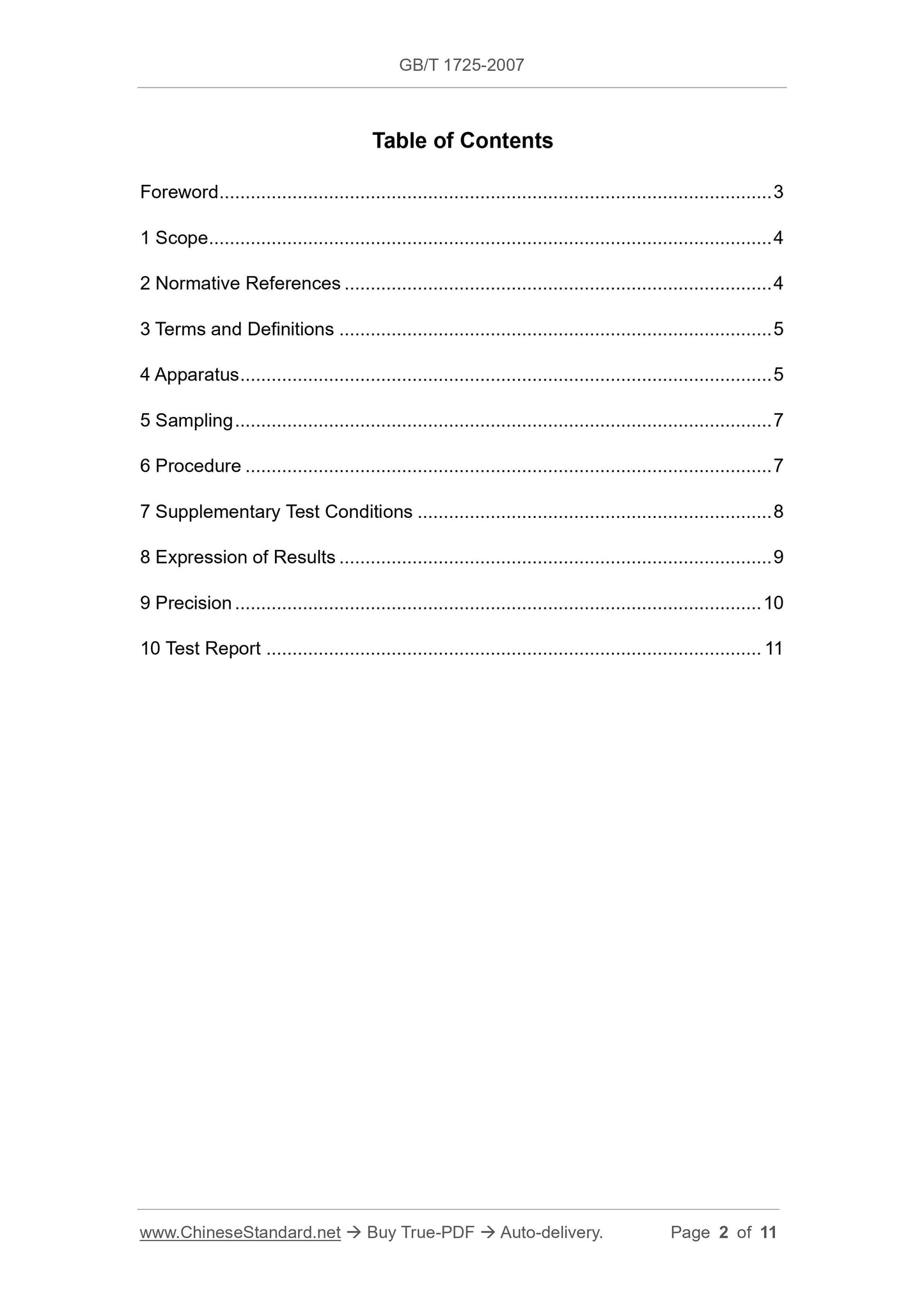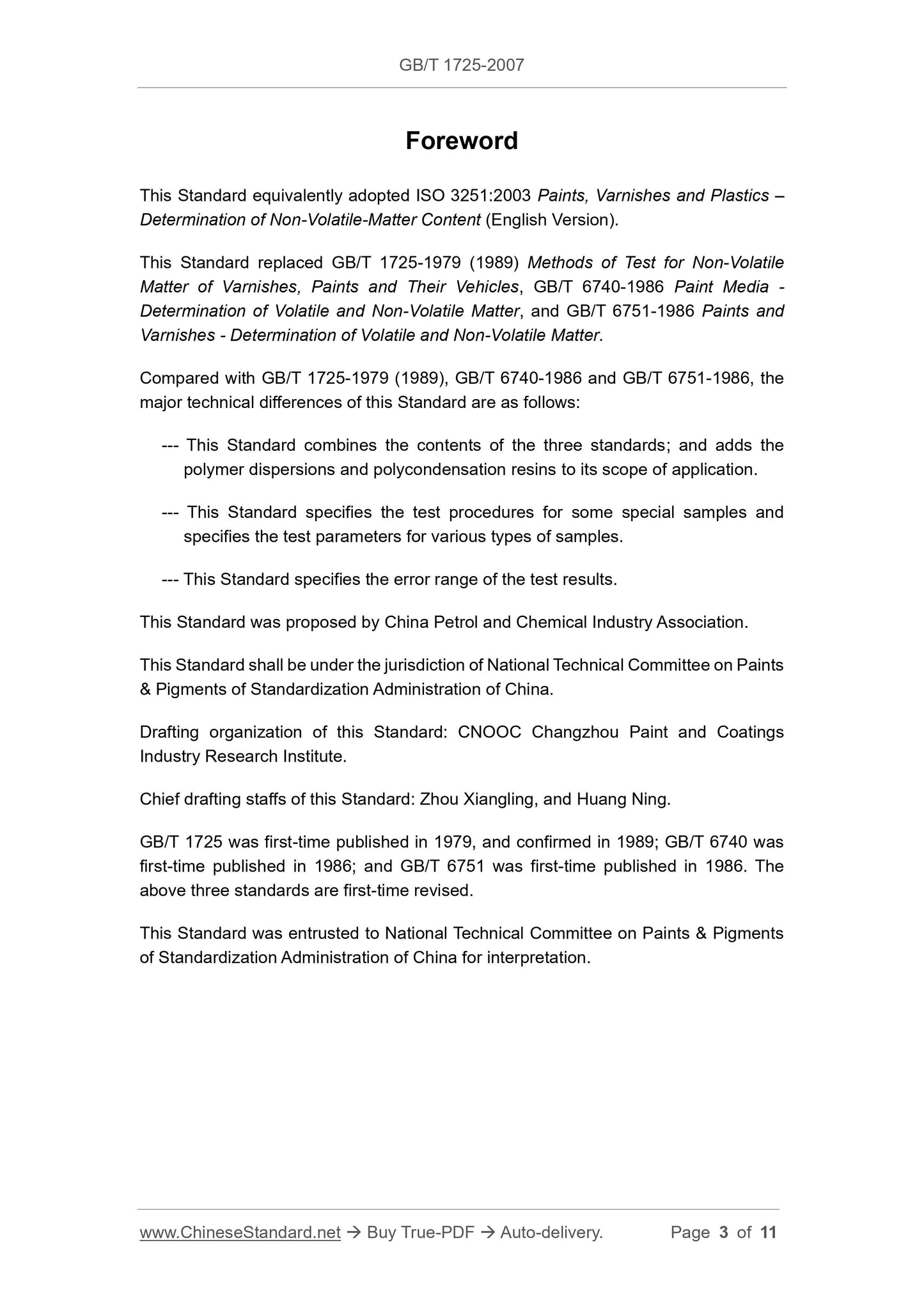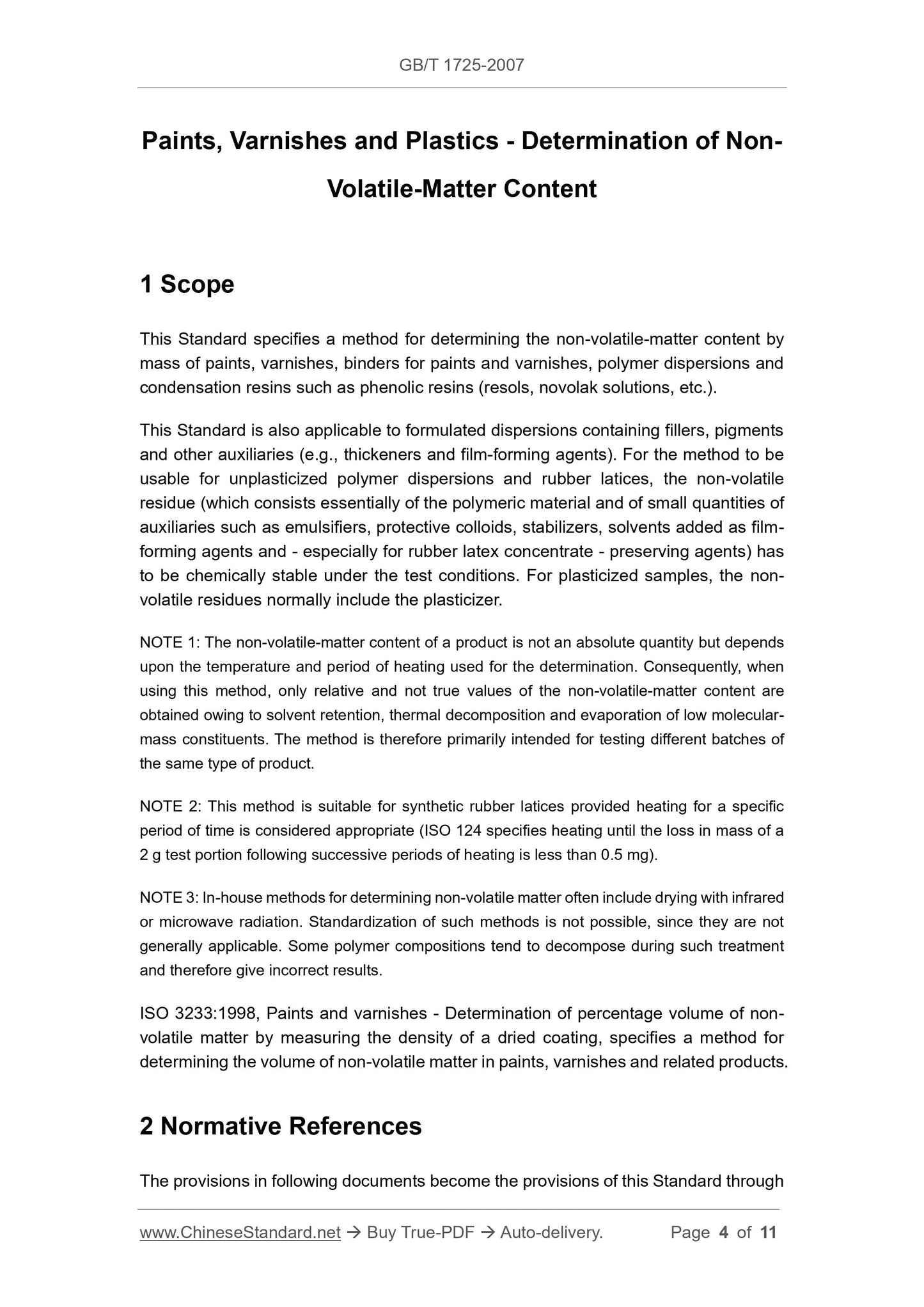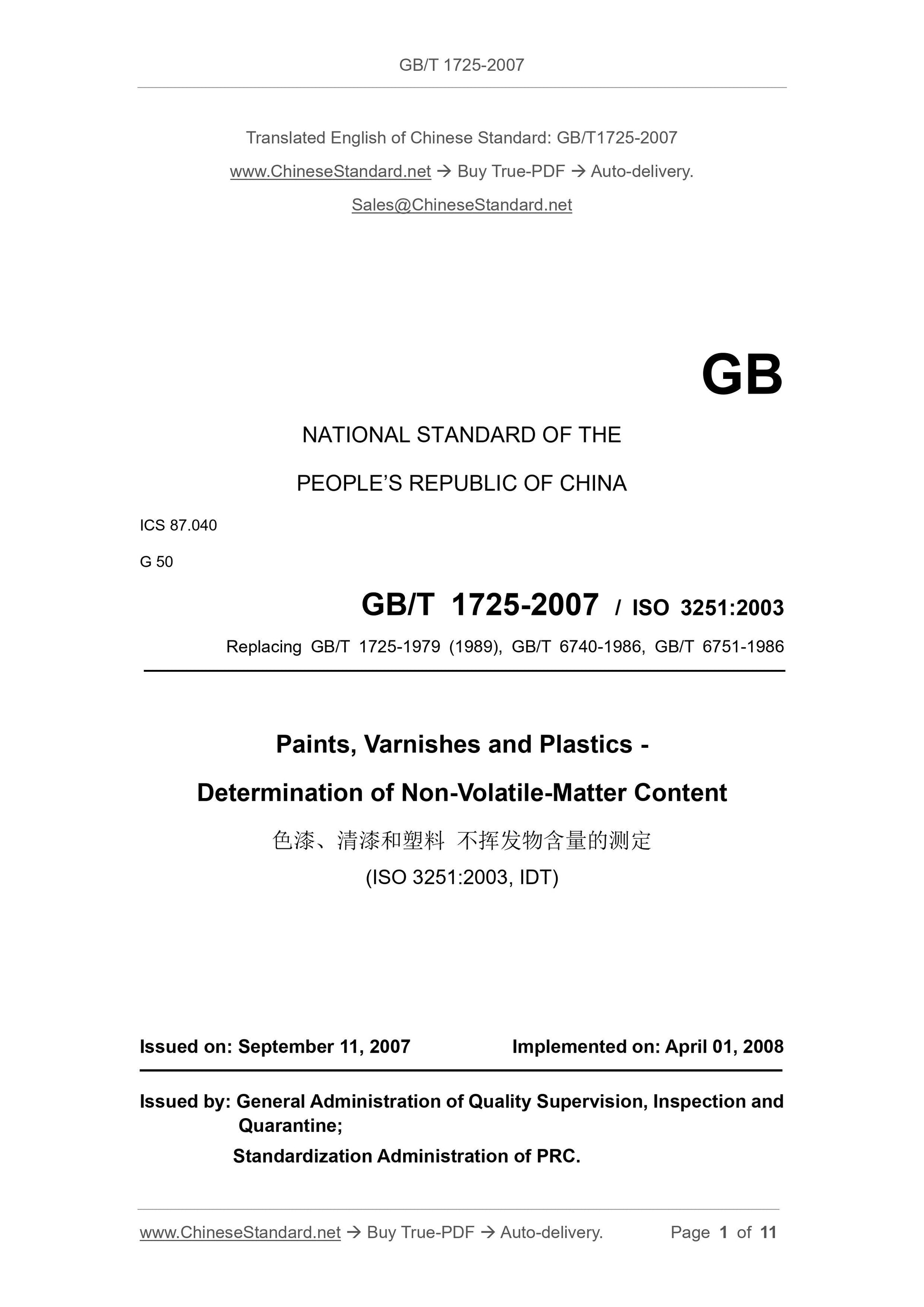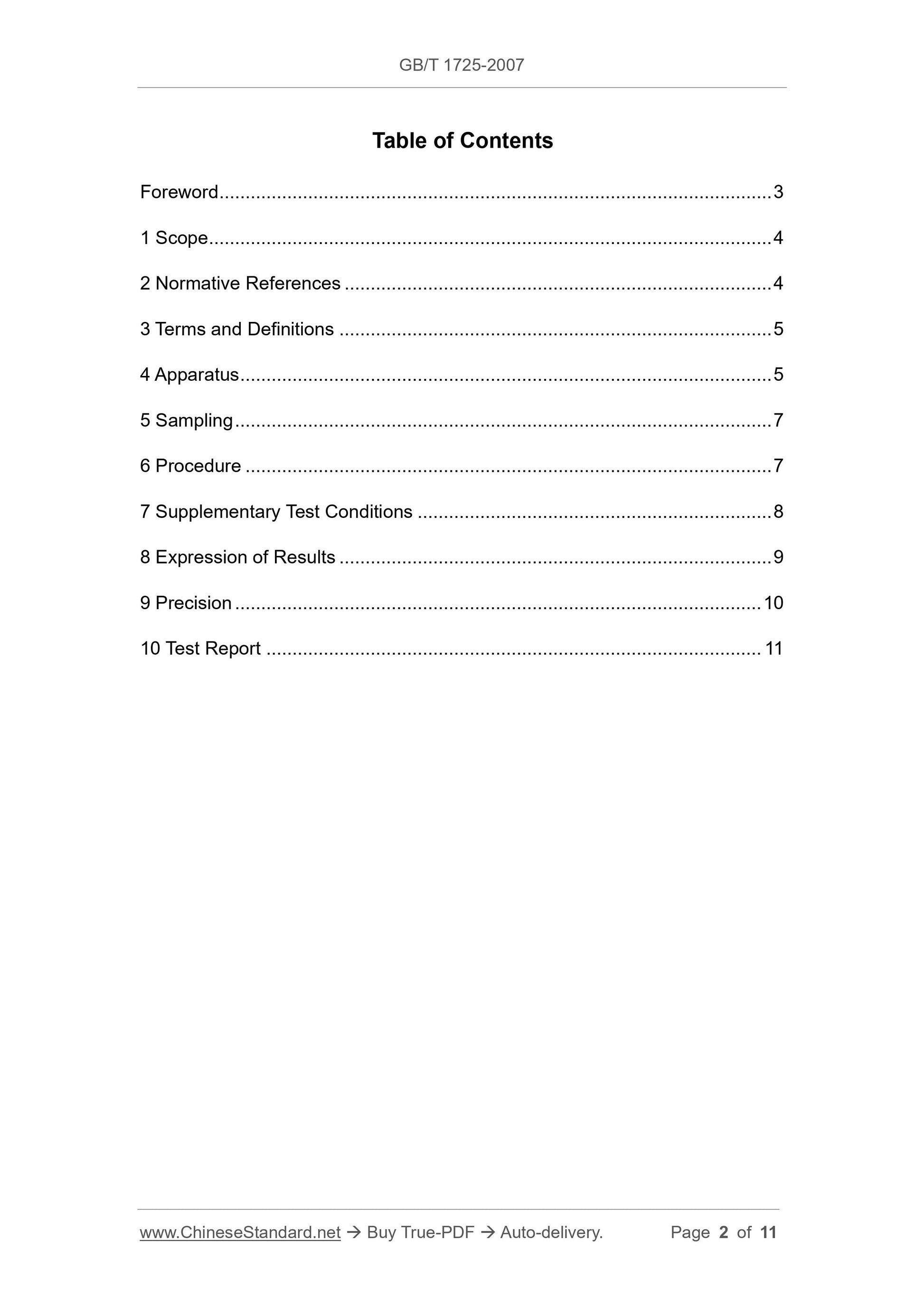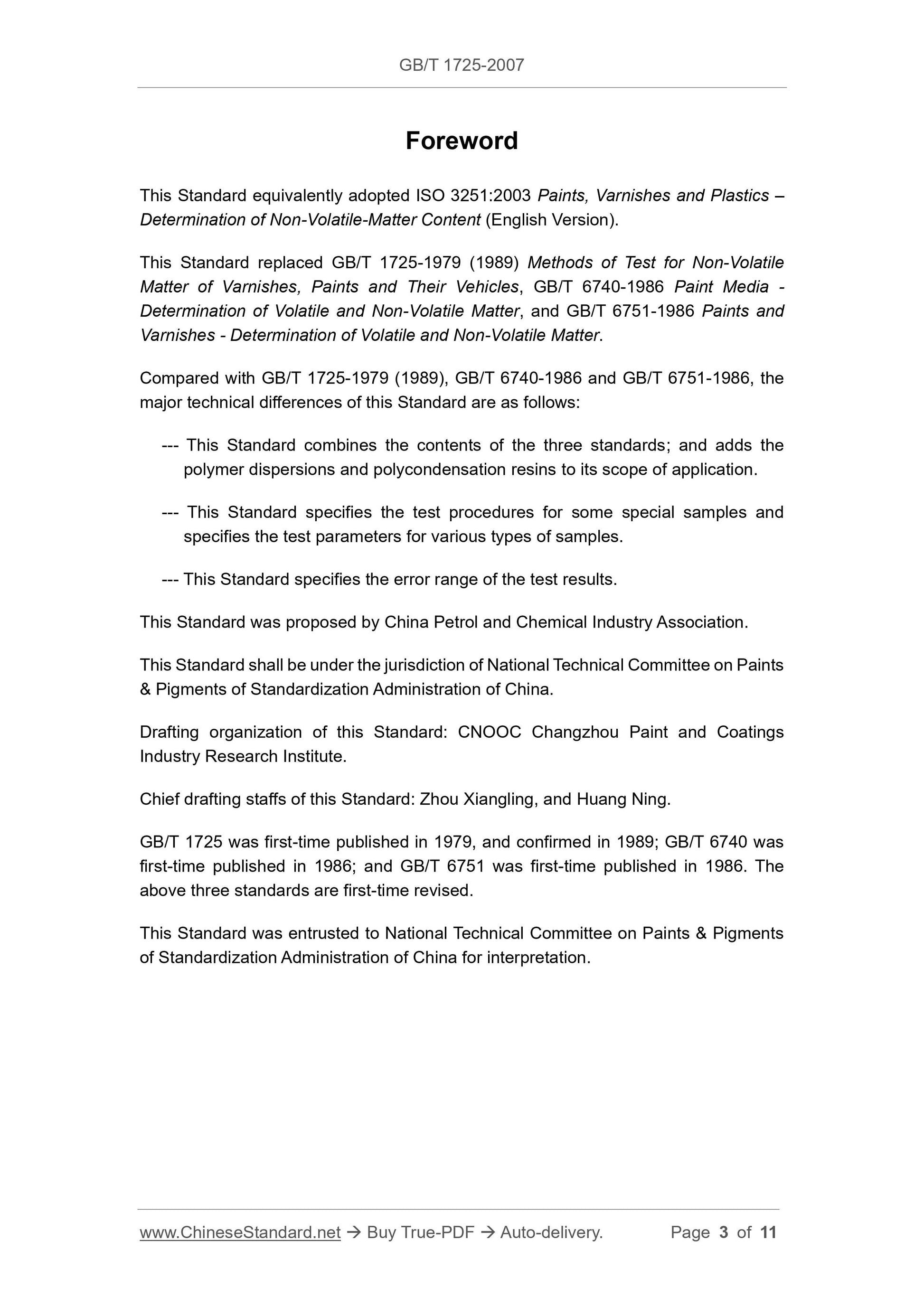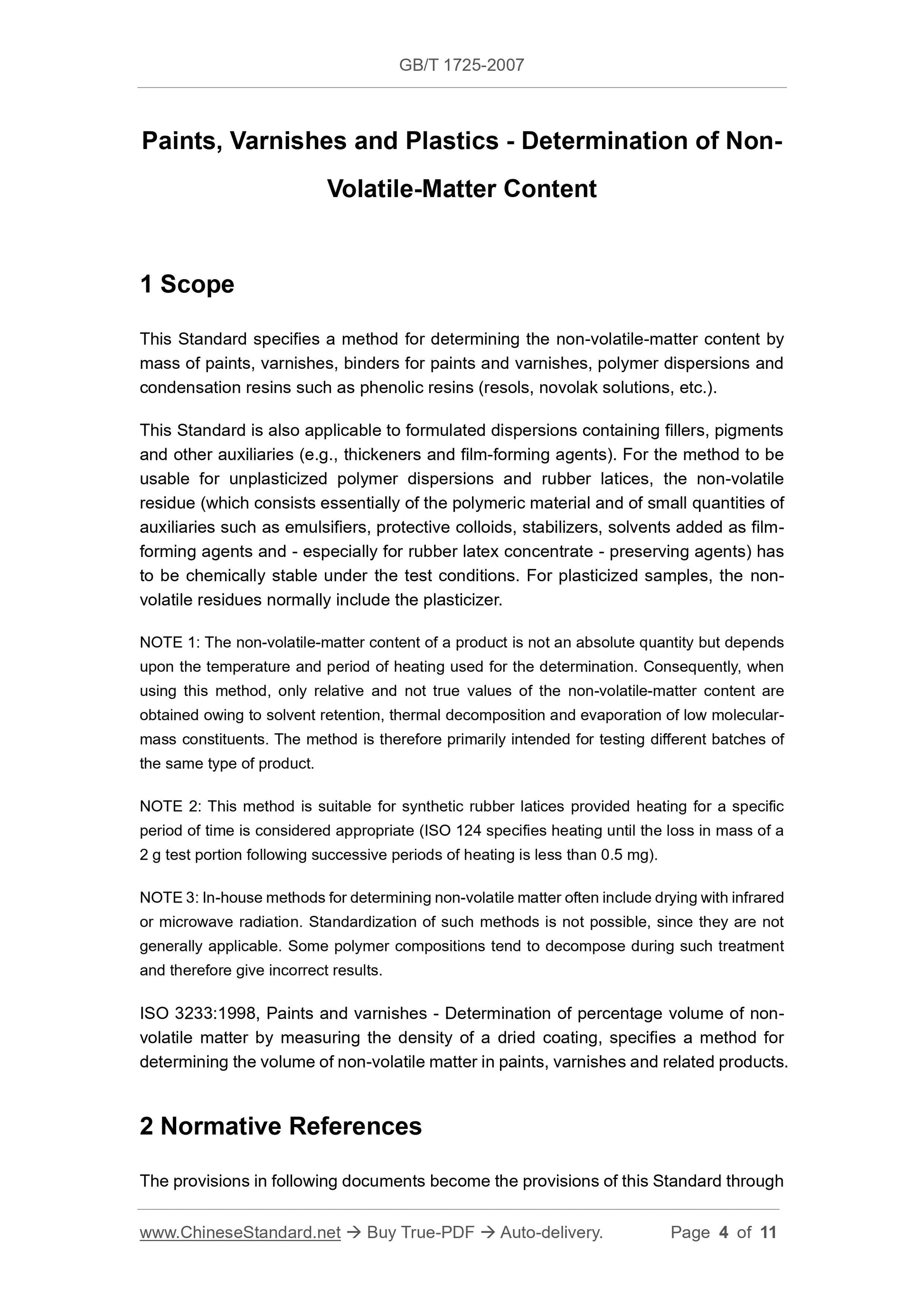1
/
of
4
www.ChineseStandard.us -- Field Test Asia Pte. Ltd.
GB/T 1725-2007 English PDF (GB/T1725-2007)
GB/T 1725-2007 English PDF (GB/T1725-2007)
Regular price
$105.00
Regular price
Sale price
$105.00
Unit price
/
per
Shipping calculated at checkout.
Couldn't load pickup availability
GB/T 1725-2007: Paints, varnishes and plastics -- Determination of non-volatile-matter content
Delivery: 9 seconds. Download (and Email) true-PDF + Invoice.Get Quotation: Click GB/T 1725-2007 (Self-service in 1-minute)
Newer / historical versions: GB/T 1725-2007
Preview True-PDF
Scope
This Standard specifies a method for determining the non-volatile-matter content bymass of paints, varnishes, binders for paints and varnishes, polymer dispersions and
condensation resins such as phenolic resins (resols, novolak solutions, etc.).
This Standard is also applicable to formulated dispersions containing fillers, pigments
and other auxiliaries (e.g., thickeners and film-forming agents). For the method to be
usable for unplasticized polymer dispersions and rubber latices, the non-volatile
residue (which consists essentially of the polymeric material and of small quantities of
auxiliaries such as emulsifiers, protective colloids, stabilizers, solvents added as film-
forming agents and - especially for rubber latex concentrate - preserving agents) has
to be chemically stable under the test conditions. For plasticized samples, the non-
volatile residues normally include the plasticizer.
NOTE 1: The non-volatile-matter content of a product is not an absolute quantity but depends
upon the temperature and period of heating used for the determination. Consequently, when
using this method, only relative and not true values of the non-volatile-matter content are
obtained owing to solvent retention, thermal decomposition and evaporation of low molecular-
mass constituents. The method is therefore primarily intended for testing different batches of
the same type of product.
NOTE 2: This method is suitable for synthetic rubber latices provided heating for a specific
period of time is considered appropriate (ISO 124 specifies heating until the loss in mass of a
2 g test portion following successive periods of heating is less than 0.5 mg).
NOTE 3: In-house methods for determining non-volatile matter often include drying with infrared
or microwave radiation. Standardization of such methods is not possible, since they are not
generally applicable. Some polymer compositions tend to decompose during such treatment
and therefore give incorrect results.
ISO 3233:1998, Paints and varnishes - Determination of percentage volume of non-
volatile matter by measuring the density of a dried coating, specifies a method for
determining the volume of non-volatile matter in paints, varnishes and related products.
Basic Data
| Standard ID | GB/T 1725-2007 (GB/T1725-2007) |
| Description (Translated English) | Paints, varnishes and plastics -- Determination of non-volatile-matter content |
| Sector / Industry | National Standard (Recommended) |
| Classification of Chinese Standard | G50 |
| Classification of International Standard | 87.040 |
| Word Count Estimation | 8,882 |
| Date of Issue | 2007-09-11 |
| Date of Implementation | 2008-04-01 |
| Older Standard (superseded by this standard) | GB/T 1725-1979 (1989); GB/T 6740-1986; GB/T 6751-1986 |
| Quoted Standard | GB/T 3186-2006; GB/T 6753.4-1998; GB/T 8298-2001; GB/T 20777-2006; ISO 123: 2001 |
| Adopted Standard | ISO 3251-2003, IDT |
| Issuing agency(ies) | General Administration of Quality Supervision, Inspection and Quarantine of the People's Republic of China, Standardization Administration of the People's Republic of China |
| Summary | This standard provides for the determination paint, varnishes, paints and varnishes, polymer dispersions and polycondensation resins, such as phenolic resin (resole phenolic novolak resin solution and the like) of the method of non-volatile matter content. This is also applicable to a pigment, filler and other additives (such as thickening agent and film-forming aid) dispersion. This standard can also be used unplasticized polymer of the latex proud body, which is not volatile residue (mainly polymeric material and a small amount of additives such as emulsifiers, protective colloids, stabilizers, film-forming additive added as a solvents, in particular for the concentrated liquid latex preservatives) face in the test conditions should be chemically stable. The sample can be plasticized, non-volatile residue typically include plasticizers. |
Share
